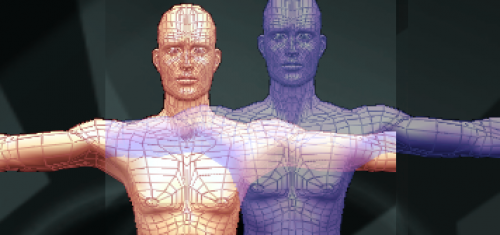BY LETTER
Fork
 Image from Steve Bowers |
A fork is a copy of any sophont entity, which closely resembles the original when first created. However as soon as the copy and the original begin to interact with the environment the copy will diverge from the original, following a separate path of development (hence 'fork').
Forks may be virtual copies of a biological original (an 'upload'), or a virtual or aioid copy of a virtual or aioid original, or a biological copy of a biological original (a bioxox). In general, any fork which exists on the same substrate as the original is known as a scion, whether it is a full ('alpha') copy or a partial, lower-grade copy.
The original entity which was copied is known as an 'alpha copy' or 'alpha fork'; aioid or virtual copies may be so accurate that the copy is effectively identical to the original, and in this case the fork is also known as an 'alpha' version. Highly accurate copies are known as beta copies or beta forks; most modern nondestructive uploads taken from biological sophonts are beta forks, and any inaccuracies they may have are insignificant (for most purposes).
Less accurate forms of copying such as simulation by observation or historical reconstruction can only create partial forks, which are known as gamma or delta forks. Many scions are deliberately edited to produce reduced copies of the original, usually in order to produce an avatar or agent with restricted capacity compared to the original.
Forks may, with difficulty, be merged back into a single individual, but the resulting entity can be quite different to each of the forks, since it will be able to review its memories from two (or several) points of view. The longer a fork has been separated from its twin, the more difficult the merging becomes, unless the two forks have been in close communication during this period.
Related Articles
Appears in Topics
Development Notes
Text by Adam Foust, in Anders Sandberg's Transhumanist Terminology
Additional Material by Steve Bowers, July 2013
Initially published on 29 October 2001.
Additional Material by Steve Bowers, July 2013
Initially published on 29 October 2001.






